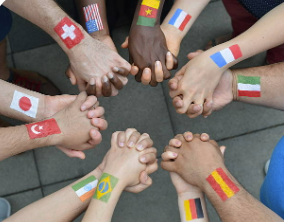As global education advanced, understanding various education systems is crucial for parents to make informed decisions for their children. This overview explores traditional systems, like the British and American models, the comprehensive system like IB ( International Baccalaureate ) and highlights emerging systems, including the Modern Educational Movement (MEM), that shape the future of education.
1. American Education System
The American education system, originating in the United States, is known for its flexibility and wide range of subject choices. It encourages creativity and critical thinking through a broad-based curriculum and extracurricular activities. The main advantage is its adaptability, allowing students to explore various fields. However, this broad approach may sometimes lead to less depth in specialized areas compared to more focused systems.
2. British Education System
The British system, particularly through GCSEs and A-Levels, is structured and focuses on depth in subject knowledge. Rooted in the UK, it provides a strong foundation in core subjects such as math, science, and literature, with increasing specialization as students progress. This system’s strength lies in its academic rigor and preparation for higher education, although it offers less flexibility for students who wish to explore a broader range of subjects.
3. International Baccalaureate (IB)
Developed in Switzerland, the International Baccalaureate (IB) program is designed to be globally applicable. It emphasizes holistic education, encouraging students to excel academically while developing critical thinking and international-mindedness. IB’s rigorous curriculum prepares students for university and global citizenship, although it can be demanding.
4. Finnish Education System
The Finnish education system is renowned for its emphasis on equality, student well-being, and minimal standardized testing. Originating in Finland, it focuses on personalized learning and fosters a love for learning. Finnish education reduces stress by minimizing homework and tests, producing well-rounded and happy students, though it may not always excel in standardized testing environments.
5. Montessori Method
The Montessori method, developed by Maria Montessori in Italy, emphasizes self-directed learning and hands-on activities. This child-centered approach nurtures independence, creativity, and social skills. Montessori schools allow children to learn at their own pace, guided by their interests. While effective for some, it may not suit students who thrive in more structured environments.
6. Chinese Education System
The Chinese education system is characterized by its rigorous curriculum and strong focus on academic achievement, particularly in math and sciences. It relies heavily on standardized testing, with the Gaokao being a critical university entrance exam. While this system produces highly disciplined and academically proficient students, the intense pressure can sometimes limit creativity and personal development.
7. Modern Educational Movement (MEM)
The Modern Educational Movement (MEM) represents a shift towards more personalized, skills-based education. It focuses on fostering critical thinking, problem-solving, and adaptability, preparing students for the future’s challenges. MEM emphasizes interactive, experiential learning and integrates technology into the curriculum. This approach encourages students to take an active role in their education, promoting lifelong learning. MEM is adaptable and can be incorporated into various education systems, enhancing traditional methods with a modern perspective.
8. Innovative Systems and the Future of Education
As education continues to evolve, innovative systems like MEM highlight the trend towards personalized, interdisciplinary learning. Future education models are likely to prioritize creativity, collaboration, and adaptability—skills essential in a rapidly changing world. These systems often blend technology, global perspectives, and experiential learning, preparing students for both academic success and real-world challenges.
Different system serves various objectives of education, nothing is good or bad but only depends on suitability for different children’s personalities. Traditional system like the British or American models, a holistic program like IB, or an innovative approach like MEM, each system offers unique advantages and focus. Parents can make better educational choices by understanding these systems and aligning them with their children’s needs, charateristics and future aspirations.



